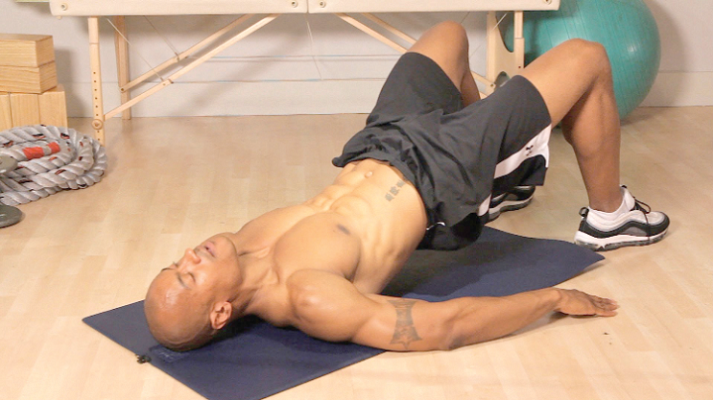The Mirror's Health , Lifestyle and Fashion

Ways of managing abdominal strain
This exercise is usually executed to prevent the muscles from becoming weak due to disuse when you are recovering from your injury.
Advertisement
As your abdominal/ stomach muscles continue to heal and joint movement improves, more challenging exercises are introduced to build up your core. Various movements are also performed each targeting specific muscle groups.
Bridge exercise
One of the trunk exercises that is beneficial is the bridging exercise. This is easily performed by lying on your back on a floor mat or bed.
Gently bend both knees so that both feet is firmly on the ground. Slowly lift your hips off the ground or bed so that only your feet, hands, upper back and head touch the ground.
When your trunk muscles begin to get stronger, then you can place both hands on your chest. Hold the position for 15-20 seconds before allowing your back to touch the floor again.
You can repeat this as often as you can while you train. Ensure that while maintaining the position you tighten your stomach and back muscles for 15-20 seconds.
You can also perform the exercise in another way – slightly challenging. While your hips are off the bed or floor, slowly lift one of your legs off the bed/floor. Hold the position for 10-12 seconds and then relax. Repeat the exercise, but lift your other leg instead. You may repeat as often as you can.
Plank exercise
This exercise aids in building up your trunk/torso muscles. Lie on your stomach and slowly go up onto your forearms. As you go up on your forearms, ensure that your knees are off the ground. Hold the position for 15-20 seconds and relax.
As your trunk muscles get stronger, gently push up again with both elbows straight - in a push-up position – and with both knees off the ground. Hold the position for 10-15 seconds and relax.
You may also alternatively push up on one arm and the other arm, instead of holding the position with both hands on the floor.
Another form of this exercise is to lie on your side and balance on one forearm. Keep your other arm up or off the floor but both feet on the ground.
You may also lift one arm and one leg off the floor. You may repeat as often as you can.
Crunch exercise
Lie on the floor or bed with both knees bent and feet firmly on the floor or bed. Gently tighten your stomach muscles, lift your chin towards the ceiling and slowly lift your chest off the floor/ bed.
Hold the position for 15-20 seconds and relax. Also, do not hold your breath as you perform the exercise.
Rotational exercises
Lie on the floor or bed with both knees bent and feet firmly on the floor or bed. Gently tighten your stomach muscles, lift your chin towards the ceiling and slowly lift your chest off the floor/ bed towards your right side and hold the position for 15-20 seconds.
Relax for a while and lift your chest towards the left side of your body. Hold the position for 15-20 seconds and relax.
Sports specific functional exercises
As you make good strides during your therapy, your physiotherapist will begin to introduce specific exercises targeted to get you back to your previous activities or sports.
What can I do to prevent abdominal/ side strain?
It’s essential to always include core strength training regimes in your training. This enhances your trunk/torso flexibility and improves the strength of your core muscles.
Although side strain may not always be prevented, you can minimise the risk through the following:
• Always strengthen your stomach/ abdominal muscles.
• Make sure that you rest adequately each time you train and during competitive games.
The writer is a Senior Physiotherapist at the 37 Military Hosdpital




